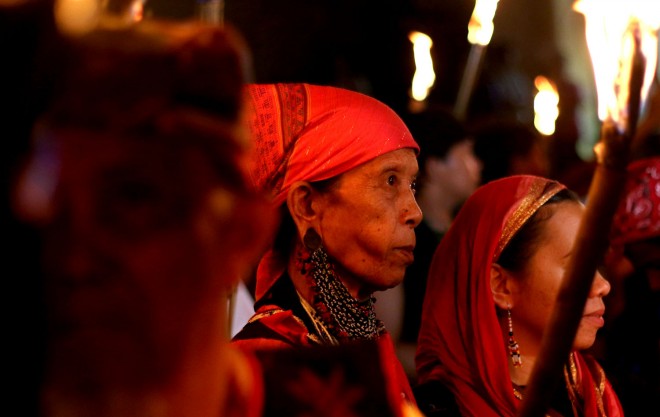IN THE KNOW: Lumad ancestral land

Indigenous People (Lumads) from Mindanao march from Philippine Normal University to Liwasang Bonifacio against the government November 12 deadline for their protest and camping out in Liwasang Bonifacio, Manila. The Lumads condemn the killings and other human rights violations in their communities. INQUIRER FILE PHOTO / RICHARD A. REYES
“Lumad” is a Visayan term meaning “native” or “indigenous,” a word adopted by some ethnic groups to distinguish themselves from Mindanaoans who are Moro or Christian.
Indigenous peoples in Mindanao had been awarded certificate of ancestral domain title (CADT) by the National Commission on Indigenous Peoples (NCIP). A CADT determines and defines the boundaries of ancestral domain and ancestral lands of a community or a tribe.
The 1987 Constitution and Republic Act No. 8371 (the Indigenous Peoples Rights Act of 1997) recognize that indigenous Filipinos own ancestral lands on which their families have lived “since time immemorial.”
In 1997, the Mandaya community in the upland village of Pichon in Caraga town was awarded a certificate of ancestral domain covering about 14,000 hectares.
The CADT-01, the first such title given to indigenous communities in southern Mindanao, covers 13 Pichon subvillages inhabited by about 7,000 people.
Article continues after this advertisementThe town of Talakag, an hour-and-a-half drive from the city of Malaybalay, Bukidnon, is the site of the Milalittra ancestral domain.
Article continues after this advertisementMilalittra was among the communities granted a CADT in 2003. Their CADT covers over 11,000 hectares.
Planted in their lands are high-value vegetables, such as cabbage and cauliflower, which are delivered mainly to the markets in Cagayan de Oro City.
Madadma, totaling about 3,177 hectares, refers to the “ancestral domain of the descendants of a great Manobo leader in the late 1800s, Datu Apao.”
Madadma claims most of the western side of Mt. Apo National Park, including the villages of Ilomovis and Balabag, and Barangay Bobbong and a portion of Barangay Kisandal in Magpet town in Cotabato, under a CADT issued on Feb. 14, 2004. —Ana Roa
Sources: Inquirer Archives